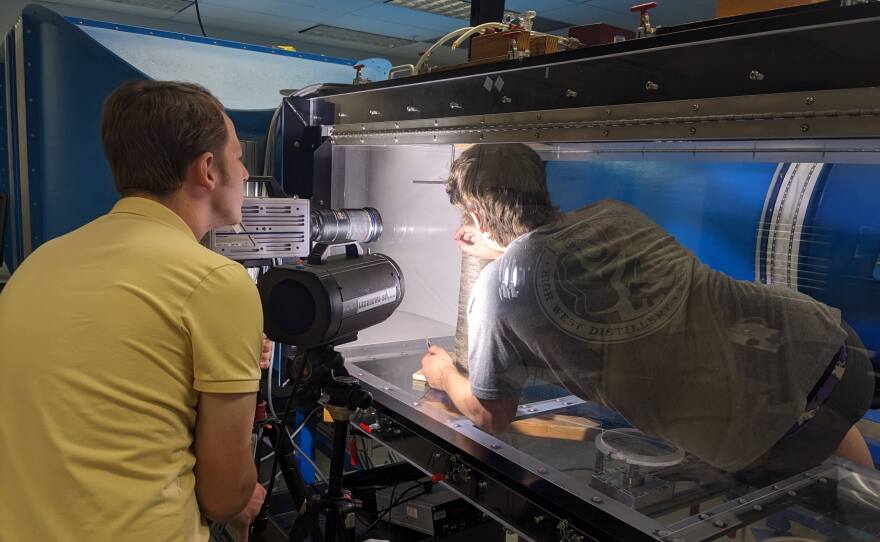A Utah State University ecological researcher is teaming up with USU engineers to learn more about the spread of an invasive insect that is devastating native fir tree forests.
Mike Wayman is a graduate student at USU who studies the spread of the balsam wooly adelgid, or BWA.
“So today, we're working in the wind tunnel here in engineering, to test out wind speeds and balsam woolly adelgid dispersal," Wayman said.
The adelgid is a tiny sap-sucking invasive insect pest first detected in northern Utah forests in 2017.
“So they're somewhat closely related to aphids, but they are invasive and they feed on all true furs in the United States," he said. "In this region, the Intermountain West, we're really worried about subalpine fir.”
That’s because the adelgid can devastate whole areas of native fir — and controlling its spread is challenging.
Wayman does some of his work at a wind tunnel near USU's department of engineering.
“So basically, we're going to put individual crawlers, which is the life stage of BWA that actually move around and disperse, onto a tree trunk in the wind tunnel," Wayman said. "And then we're going to crank up the speed while we're focusing a camera on it and then see what speeds are they coming off.”
Hunched within the wind tunnel, a large structure that takes up over half of the large lab space, Wayman meticulously placed a single microscopic crawler on a secured tree trunk while his colleague, Rhett Parry, a fellow USU graduate student, readied the camera.
“And then with the camera, side by side with the wind tunnel controller, we'll run the wind tunnel at various speeds and then we'll observe whether the bug is in the frame or not,” Parry said.
A study like this has never been done on this balsam wooly adelgid. This is an invasive species capable of great destruction so learning about its dispersal is significant.
“This insect has had a huge impact on stands in the Pacific Northwest, out on the East Coast and Appalachia, it can really do a lot of damage to forests that include true furs, and so being able to inform models and and more reliably broadcast where new infestations are going to be or where they might be coming from is really important,” Wayman said.
He hopes that these data will help inform models to better understand the adelgid’s spread at different wind speeds and hopefully shed additional light on their mechanism of dispersal.





